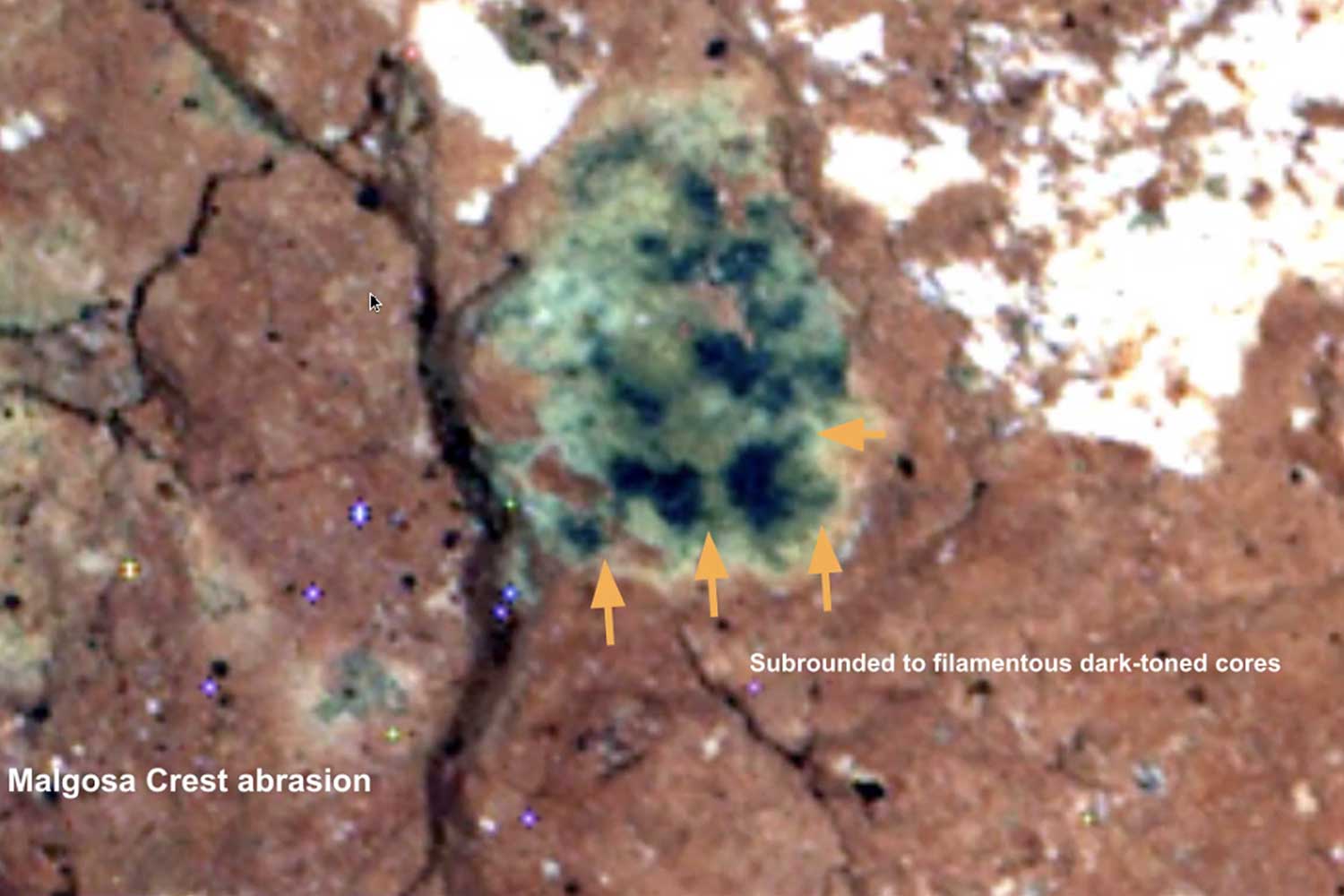They’re not completely sure. They never are. But this time, they’re pretty sure. Or, at the very least, sure enough to alert the media. Scientists monitoring the Perseverance Mars rover mission have detected matter that they believe signifies traces of life on Mars. But the mission that will return samples to Earth for further observation is currently set to be canceled under the current administration’s proposed budget.
The Perseverance rover is a 2,260-pound vehicle that landed on Mars in February 2021 as part of NASA’s 2020 mission. Its purpose is to explore the 28-mile-diameter Jezero Crater and study it from a purely geological standpoint.
In July 2024, as the rover was exploring Neretva Vallis, an ancient barren river near the crater, the scientists encountered what they have now classified as a “potential biosignature.”
A potential biosignature is “a feature or residue of something that is consistent with life but isn’t yet proven,” according to Adrian P. Broz, a postdoctoral astrobiologist on the Perseverance mission. Broz, along with other scientists on the mission, published their full discovery in a September 2025 paper, “Redox-driven mineral and organic associations in Jezero Crater, Mars.”
Broz is a postdoctoral scientist working on the Mars 2020 rover mission remotely from Eugene and a courtesy faculty member at the University of Oregon Department of Earth Science. He’s been working on the mission since 2022, when he graduated from the UO with his Ph.D. in Earth and planetary science.
He tells Eugene Weekly that the Perseverance was exploring the Neretva Vallis because “life as we understand it on Earth — which primarily has water in and around its essence — forms in the presence of water and requires water for life. So we drove into this ancient dry riverbed,” Broz says, noting that Mars once hosted an abundance of liquid water.
Broz says that the rover was supposed to drive all the way through the canal, when on a slab of rocks they found “smallish millimeter scale features” that are now colloquially known by the scientists on the mission as “leopard spots.”
Those are irregularly shaped spots that are lightly colored with a darker colored outlining halo, appearing for tens of meters in every direction of the area. “If we saw these same features on Earth, these are almost exclusively formed in the presence of microbial communities,” he says.

On Earth, Broz says these would be called “reduction spots,” and “they often represent microbes that are digesting organic matter that is in the background sediment. And essentially the light minerals and the dark minerals that we see are their waste products. They’re either decomposed bodies, or the excrements from some of these different feeding reactions.”
They have yet to confirm how these formed on Mars, “but as we know them on Earth, these features typically represent a microbial biosignature,” he says, confirming that the dark halo is composed of the iron phosphate mineral “vivianite,” which “typically grows on dead things on Earth.”
The rover then traveled 300 more meters where it found more leopard spots, but this time they looked slightly different. “The rocks were redder and more oxidized and distinctly more weathered,” Broz says. There, the spots “were not only larger than the other ones, but they’re strikingly green and stand out like a sore thumb on the surface of this red rock.”
Though they were only meant to study the area for several days, this discovery kept them there for almost two months.
“Based on decades of exploring the surface of Mars with rovers, we know that most of the elements for supporting life are there,” Broz says. “But we’ve never discovered things that look like these, features that represent all of the ingredients of life — iron, phosphorus, potassium, magnesium, calcium, sulfur — in one place, spatially associated.”
“You can see these things with your naked eye,” he adds. “You don’t need a microscope. And based on Earth and our understanding of how these features form in ancient rocks on Earth, it’s the first time that we have seen a comparable feature on Mars.”
He also notes possible hypotheses that would allow the spots to develop without the presence of life, such as “with increased temperatures that are associated with rocks getting buried. On Earth, you can heat rocks up, and you can drive some of these same chemical reactions without life.”
But he clarifies, “On Earth, our planet is just so pervasively occupied by life in the atmosphere, all the way to the deep subsurface. We have microbes kilometers deep in the water, between pores of rocks and things like that. It’s hard to tell what can happen without life.”
Ultimately, the scientists on the Perseverance mission cannot confirm their findings in either direction until they can bring the samples back to Earth.
The Mars Sample Return is a proposed mission currently planned tentatively for the 2030s and would be the first ever project to bring martian organisms to Earth. In Donald Trump’s recent budget request release, the MSR is slated to face outright cancellation in favor of trying to send “a man” to Mars sooner.
“We would definitely like to throw the kitchen sink at this, with respect to instrument analysis on Earth,” Broz says. In the meantime, he says they intend to study the leopard spots with lab experiments that attempt to simulate their creation. “We could do lab studies to test and see if there’s a way to form these features, such as with applying heat, without the presence of life,” and then do the same with bacteria that use sulfur as an energy source.
“We have a lot of work to do,” Broz says, “but everybody’s pretty excited at this very moment.”
